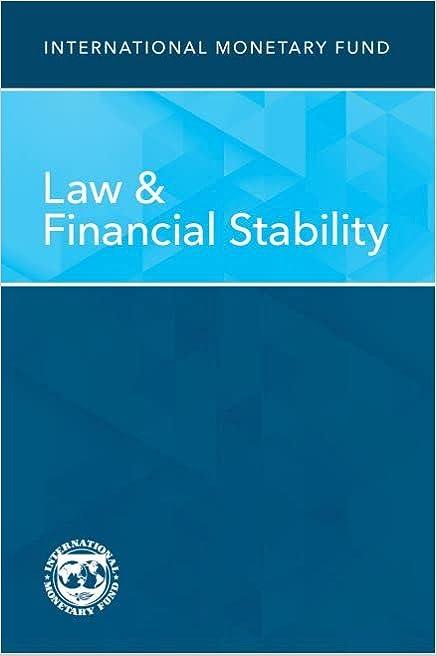Question
An investor has a quadratic utility function where U = E(R) A 2 . This investor has a coefficient of risk aversion of 2.0. There
An investor has a quadratic utility function where
U = E(R) A 2. This investor has a coefficient of risk aversion of 2.0.
There are two risky assets and a risk-free asset available to this investor. Asset A has an expected return of 7% and a standard deviation of 16%. Asset B has an expected return of 14% and a standard deviation of 26%. Assets A and B have a correlation of 0.3. Rf is a risk-free investment with a return of 3%. Please answer the following questions:
- Would our investor prefer to invest all her money into asset A, asset B, or the risk-free asset (She cannot combine assets for this particular question)? Circle the correct answer (you dont need to show your work).
A B Rf
- Find the Mean/Variance Efficient Portfolio (MVE) by combining assets A and B.
Proportion of A _________
Proportion of B _________
Expected Return of MVE ________
Standard Deviation of MVE _________
Slope of the CAL that passes through the MVE ____________
- Our investor has $1,000 to invest with us. Our job is to allocate her money among Assets A, B, and Rf so that it maximizes her utility. Short selling and borrowing at Rf are allowed. How much money will be invested in each asset and what level of utility will this give our investor? (Be sure to answer the first three parts in dollars and cents)
Money in A __________ Money in B ___________
Money in Rf __________ Utility _________
- Find the Minimum Variance Portfolio (MVP) by combining assets A and B.
Expected Return of MVP ______________
Standard Deviation of MVP ___________
Step by Step Solution
There are 3 Steps involved in it
Step: 1

Get Instant Access to Expert-Tailored Solutions
See step-by-step solutions with expert insights and AI powered tools for academic success
Step: 2

Step: 3

Ace Your Homework with AI
Get the answers you need in no time with our AI-driven, step-by-step assistance
Get Started


